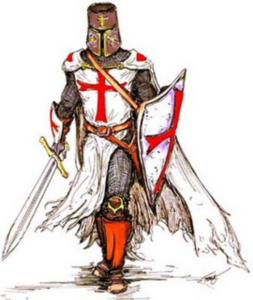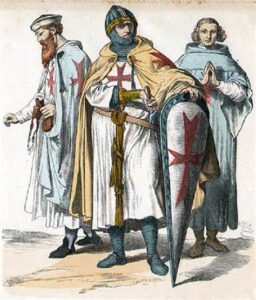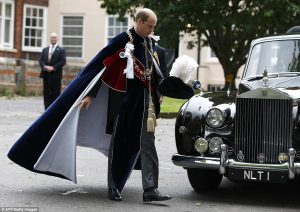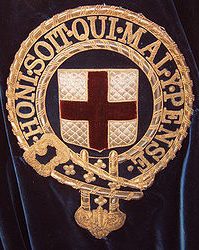sword

 My grandson, Caalab Royce, who lives in Bellingham, Washington, is such a great guy. When Caalab was in middle school, he decided that he wanted to learn to play the guitar. His dad, Travis Royce played the guitar, and Travis was, and still is, Caalab’s hero. So, when the class was offered, he jumped at the chance to actually learn to play, and not just to try to imitate what his dad was doing. Let’s face it, learning to play is much better than stumbling around with it. Which is exactly what any strumming I could do would be called. Caalab has a natural talent though, and I love to listen to him and his dad play. I think they are both very good. They have a little band that practices in his parents’ garage/T&Avern, which is a very cool place named after its owners, Travis and Amy Royce. Of course, when the weather is nice, they practice in the Royce back yard and garden. Either way, I love to listen whenever I am visiting.
My grandson, Caalab Royce, who lives in Bellingham, Washington, is such a great guy. When Caalab was in middle school, he decided that he wanted to learn to play the guitar. His dad, Travis Royce played the guitar, and Travis was, and still is, Caalab’s hero. So, when the class was offered, he jumped at the chance to actually learn to play, and not just to try to imitate what his dad was doing. Let’s face it, learning to play is much better than stumbling around with it. Which is exactly what any strumming I could do would be called. Caalab has a natural talent though, and I love to listen to him and his dad play. I think they are both very good. They have a little band that practices in his parents’ garage/T&Avern, which is a very cool place named after its owners, Travis and Amy Royce. Of course, when the weather is nice, they practice in the Royce back yard and garden. Either way, I love to listen whenever I am visiting.
Caalab has many talents, among them comedy. He always could tell a joke, never forgetting the punch line, 
 even when he was a little boy, but even more cool is his ability to just be funny. In fact, Caalab hates to be serious. Nevertheless, he has the ability to be serious when it comes to his job as kitchen manager at Red Robin in Bellingham. Let’s face it, kitchen manager at any restaurant is not easy. People in that type of job often don’t want to work. Oh, they want to get paid, but they don’t always want to work for that paycheck. Caalab, as the kitchen manager, has to pick up the slack when one of his kitchen workers doesn’t show up for a shift or when they quit with no notice. It seems to be a common problem in the food industry, no matter what minimum wage is. I think it’s common in many industries. People want a paycheck…but they don’t want a job!!!
even when he was a little boy, but even more cool is his ability to just be funny. In fact, Caalab hates to be serious. Nevertheless, he has the ability to be serious when it comes to his job as kitchen manager at Red Robin in Bellingham. Let’s face it, kitchen manager at any restaurant is not easy. People in that type of job often don’t want to work. Oh, they want to get paid, but they don’t always want to work for that paycheck. Caalab, as the kitchen manager, has to pick up the slack when one of his kitchen workers doesn’t show up for a shift or when they quit with no notice. It seems to be a common problem in the food industry, no matter what minimum wage is. I think it’s common in many industries. People want a paycheck…but they don’t want a job!!!
Caalab has always been a blessing, even if his sister, Shai Royce couldn’t always see the funny side of things, especially when the joke was on her. Nevertheless, these days these two are best friends. Oh, don’t get me wrong, they can argue, but they are still best friends. I always knew they would be, and I told Shai that, but as 
 a young girl, who was always teased by her little brother, she just couldn’t see it. Caalab did love to tease her, but he would have done anything for her too. She was his big sis, and nobody better bother his big sis. For her part, Shai would also do just about anything for her brother too, and she trusts him implicitly, which is quite evident in the fact that for his birthday, she actually bought him a real sword. It is a collector’s sword, but a sword nevertheless, and Caalab thought it was the coolest thing ever. Today is Caalab’s 26th birthday. Happy birthday Caalab!! Have a great day!! We love you!!
a young girl, who was always teased by her little brother, she just couldn’t see it. Caalab did love to tease her, but he would have done anything for her too. She was his big sis, and nobody better bother his big sis. For her part, Shai would also do just about anything for her brother too, and she trusts him implicitly, which is quite evident in the fact that for his birthday, she actually bought him a real sword. It is a collector’s sword, but a sword nevertheless, and Caalab thought it was the coolest thing ever. Today is Caalab’s 26th birthday. Happy birthday Caalab!! Have a great day!! We love you!!
 The word knight always makes me think of medieval men in full armor fighting with shields and swords, and maybe that isn’t so far off with the Knights Templar. One thing I didn’t connect to the knights, was Christianity, but maybe I should have. The medieval knights are a little outside my wheelhouse, but I have had an interest in them for a while now, and the Knights Templar are at the top of my list. So, I decided to have a look at exactly what they are, beginning with the Knights Templar.
The word knight always makes me think of medieval men in full armor fighting with shields and swords, and maybe that isn’t so far off with the Knights Templar. One thing I didn’t connect to the knights, was Christianity, but maybe I should have. The medieval knights are a little outside my wheelhouse, but I have had an interest in them for a while now, and the Knights Templar are at the top of my list. So, I decided to have a look at exactly what they are, beginning with the Knights Templar.
After Christian armies captured Jerusalem from Muslim control in 1099 during the Crusades, groups of pilgrims from across Western Europe started visiting the Holy Land. As they traveled, many of them were robbed and killed crossing through Muslim-controlled territories during their journey. A French knight named Hugues de Payens created a military order along with eight relatives and acquaintances, calling it the Poor Fellow-Soldiers of Christ and the Temple of Solomon. Later known simply as the Knights Templar (Knights of the Temple), it was founded in 1118 in Jerusalem, and was a large organization of devout Christians who carried out an important mission: to protect European travelers visiting sites in the Holy Land. The first headquarters of the Knights Templar was located on the site of the Temple of Solomon, and it was to this temple that the organization was dedicated and where it got its name.
Initially, the Knights Templar faced criticism from some religious leaders. There are always those who think the church and any kind of government or military group should not mix, but in 1129, the group received the formal endorsement of the Catholic Church and support from Bernard of Clairvaux, a prominent French abbot. Bernard authored “In Praise of the New Knighthood,” a text that supported the Knights Templar and bolstered their growth. In 1139, Pope Innocent II issued a Papal Bull that allowed the Knights Templar special rights. Among them, the Templars were exempt from paying taxes, permitted to build their own oratories and were held to no one’s authority except the Pope’s.
The Knights Templar quickly set up a network of banks and gained enormous financial influence, with an ability to quickly fund their work. Their banking system allowed religious pilgrims to deposit assets in their home countries and withdraw funds in the Holy Land. The order became known for its austere code of conduct (which included no pointy shoes and no kissing their mothers, rules outlined in “The Rule of the Templars”) and signature style of dress, which featured a white habit emblazoned with a simple red cross. Members swore an oath of poverty, chastity and obedience. They weren’t allowed to drink, gamble or swear. Prayer was essential to their daily life, and the Templars expressed particular adoration for the Virgin Mary.
New chapters of the Knights Templar were established throughout Western Europe as the group grew in size and status. At the height of their influence, the Templars had a sizable fleet of ships, and they owned the Mediterranean island of Cyprus. They served as a primary bank and lending institution to European monarchs and nobles. Though its original purpose was to protect Christiam pilgrims from danger, the Knights Templar later expanded its duties. They became defenders of the Crusader states in the Holy Land and were known as brave, highly skilled warriors. The group developed a reputation as fierce fighters during the Crusades. They were driven by religious zeal and forbidden from retreating unless significantly outnumbered, and I doubt if they would even then. The Templars built numerous castles. They fought, and often won, battles against Islamic armies. Their fearless style of fighting became a model for other military orders. They were quite the group.
 On this day, April 23, 1348, the Most Noble Order of the Garter…the first knighthood of England was founded. This knighthood is only inferior to the Victoria Cross and the George Cross. The honor is always bestowed on its winners on April 23, which is Saint George’s day. Saint George is England’s patron saint. Appointments are awarded at the Sovereign’s pleasure as a personal gift on recipients from the United Kingdom and other Commonwealth realms. Membership of the Order is limited to the Sovereign, the Prince of Wales, and no more than 24 members, or Companions. The order also includes supernumerary knights and ladies.
On this day, April 23, 1348, the Most Noble Order of the Garter…the first knighthood of England was founded. This knighthood is only inferior to the Victoria Cross and the George Cross. The honor is always bestowed on its winners on April 23, which is Saint George’s day. Saint George is England’s patron saint. Appointments are awarded at the Sovereign’s pleasure as a personal gift on recipients from the United Kingdom and other Commonwealth realms. Membership of the Order is limited to the Sovereign, the Prince of Wales, and no more than 24 members, or Companions. The order also includes supernumerary knights and ladies.
That made me wonder just exactly what it took to become a knight. It seems that in Medieval times, becoming a knight was something young men trained for from early childhood.  Knighthood training was a long and often arduous process. It began with a basic education and good manners and rules of etiquette were taught at home. At the age of seven, young boys were sent away to the castles and homes of wealthy lords or relatives to embark on their knighthood training. From the age of seven to fourteen these young boys were given the role of a Medieval Page. From fourteen to twenty-one these ‘apprentice knights’ were referred to as Squires. The different types and styles of Knighthood training depended on the age and strength of the apprentice knights. Knighthood training was focussed on weapon practice which included enhancing skills in horsemanship, the two-handed sword, battle axe, mace, dagger and lance. Still, it was not all the training that ultimately won the squire to coveted title of knight. A squire had to prove his bravery and skill at battle. Only then, would he become a knight…at the age of twenty-one. He gained the title of knight at a “dubbing” ceremony. All this was a really big deal.
Knighthood training was a long and often arduous process. It began with a basic education and good manners and rules of etiquette were taught at home. At the age of seven, young boys were sent away to the castles and homes of wealthy lords or relatives to embark on their knighthood training. From the age of seven to fourteen these young boys were given the role of a Medieval Page. From fourteen to twenty-one these ‘apprentice knights’ were referred to as Squires. The different types and styles of Knighthood training depended on the age and strength of the apprentice knights. Knighthood training was focussed on weapon practice which included enhancing skills in horsemanship, the two-handed sword, battle axe, mace, dagger and lance. Still, it was not all the training that ultimately won the squire to coveted title of knight. A squire had to prove his bravery and skill at battle. Only then, would he become a knight…at the age of twenty-one. He gained the title of knight at a “dubbing” ceremony. All this was a really big deal.
Knighthood, like all tradition has undergone changes over the centuries, and I’m sure most of us know that people like Paul McCartney, Elton John, and Mick Jagger have all been knighted. After researching the  requirements of old, I wondered how these men became knights. So, I looked into it, and I came back disappointed. It seems that these men were knighted for their work in music and charity. While these are noteworthy accomplishments, it seems to me that they could find a different type of award for these feats. How can work in music and charity possibly be as award worthy as bravery and skill in battle. That would be like giving the purple heart to someone who wrote a book about someone being injured in a war. I think David Bowie must have agreed with me, because in 2003, he turned down the knighthood offered to him. He was labeled a rebel, and it was thought that he was unimpressed with nobility, but maybe he just didn’t see how he could have earned it. I would agree.
requirements of old, I wondered how these men became knights. So, I looked into it, and I came back disappointed. It seems that these men were knighted for their work in music and charity. While these are noteworthy accomplishments, it seems to me that they could find a different type of award for these feats. How can work in music and charity possibly be as award worthy as bravery and skill in battle. That would be like giving the purple heart to someone who wrote a book about someone being injured in a war. I think David Bowie must have agreed with me, because in 2003, he turned down the knighthood offered to him. He was labeled a rebel, and it was thought that he was unimpressed with nobility, but maybe he just didn’t see how he could have earned it. I would agree.

